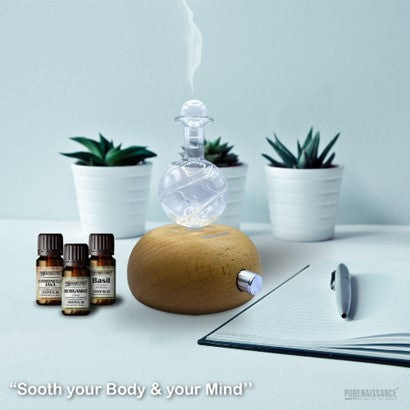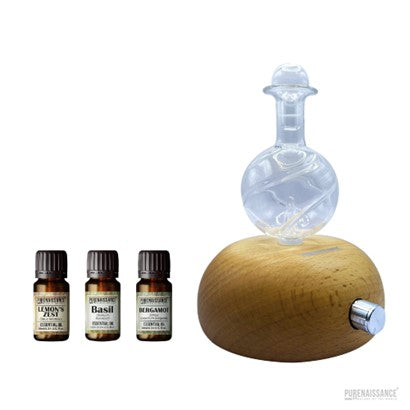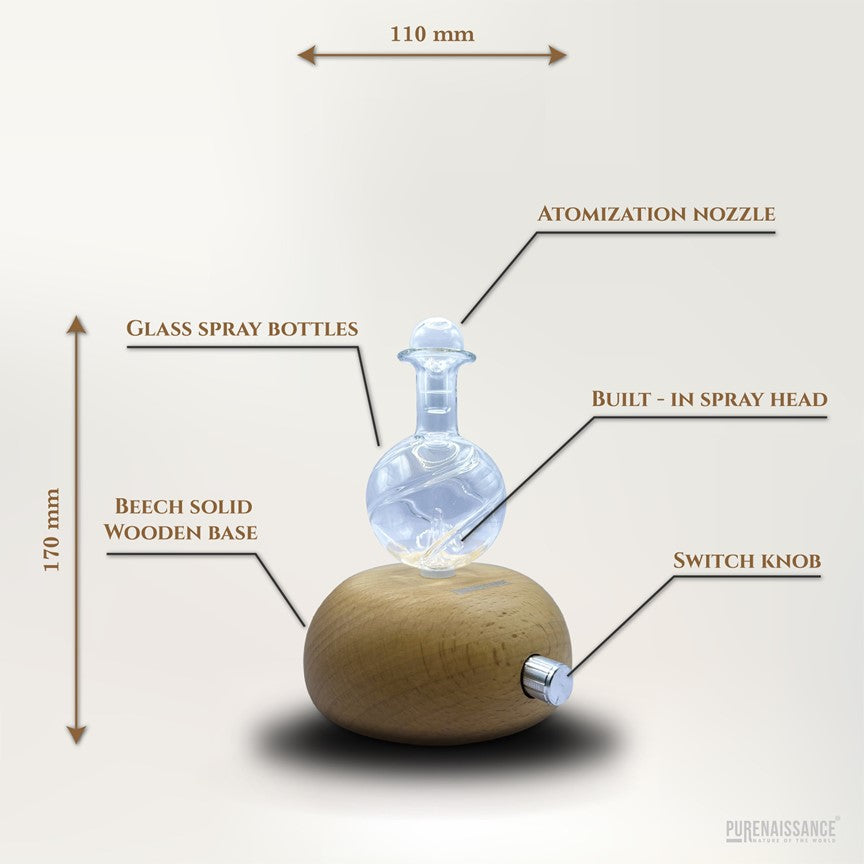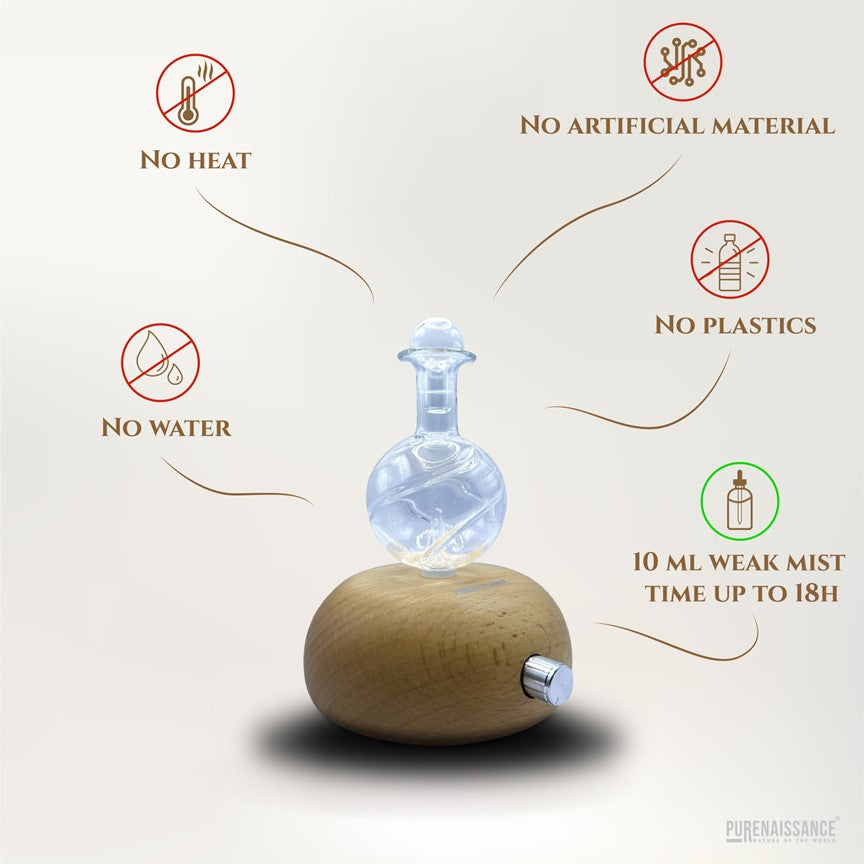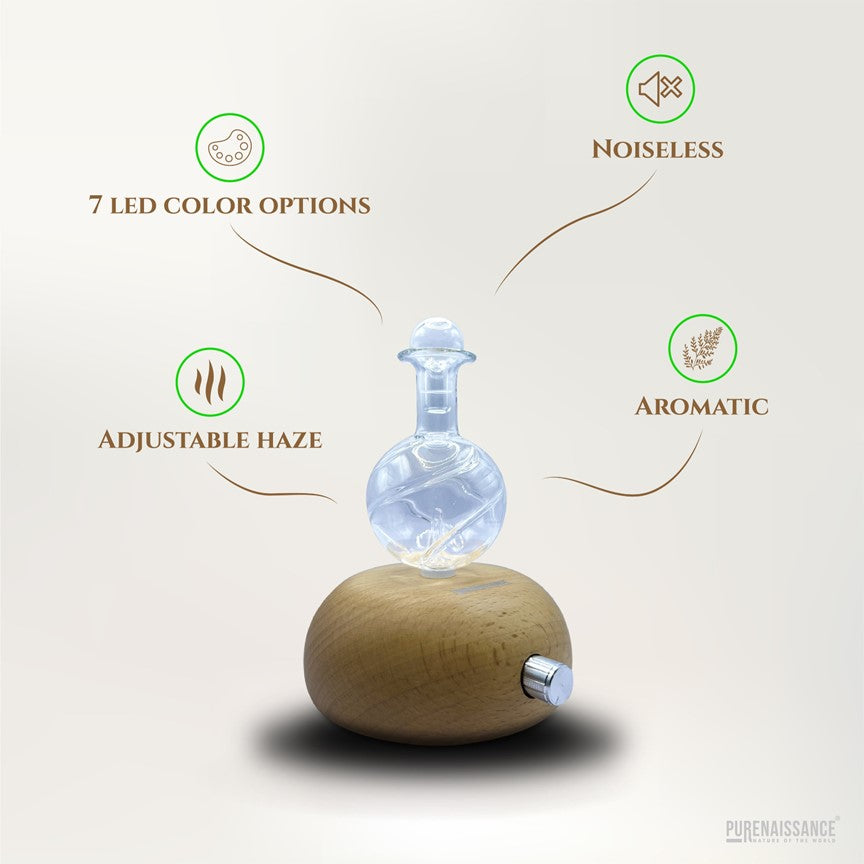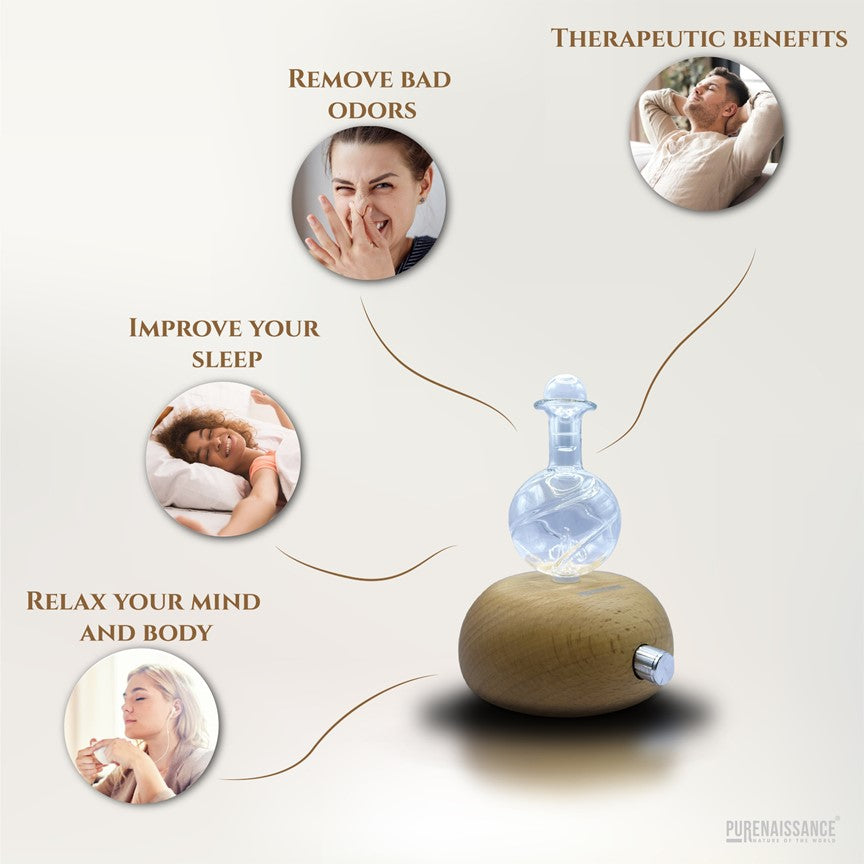Purenaissance
Aromatherapy Essential Oil Diffuser Nebulizer by Purenaissance, Natural Wood and Glass, Waterless Design, Includes Three 10ml Essential Oil Bottles
Aromatherapy Essential Oil Diffuser Nebulizer by Purenaissance, Natural Wood and Glass, Waterless Design, Includes Three 10ml Essential Oil Bottles
Couldn't load pickup availability
Aromatherapy Essential Oil Diffuser Nebulizer by Purenaissance
Elegant Design: Crafted with a solid beech wood base and a glass spray bottle, this diffuser features a premium atomization nozzle and adaptor. Its stylish look enhances the decor of any home or office space.
- Size: 91 x 200 mm (model sizes may vary)
- Power Input: 110–240 V, 50/60 Hz
- Power Output: DC 12 V – 0.5 A / DC 5 V – 1 A
- Features: Non-slip base for stability
Why Choose Nebulizing Diffusers?
-
High-Quality Performance:
The Purenaissance Aroma Nebulizing Diffuser is a top-tier choice for aromatherapists. It uses cold vaporization to disperse pure essential oils, ensuring the purest aroma over a wide area within minutes. -
Natural Materials:
Made from a glass bottle and beech wood base, no plastic or artificial materials come into contact with the oils. Maximum oil capacity: 30 ml. -
100% Safe Operation:
- Waterless Design: Maintains the purity of essential oils.
- No Heat: Prevents alteration of essential oil properties.
- Auto Shut-Off: Turns off after 2 hours of use for safety.
-
Customizable Settings:
- Adjustable haze intensity for spaces up to 20 x 30 square meters.
- Quiet operation with 7-colored LED lights.
-
Stylish and Functional:
Perfect for living rooms, bedrooms, bathrooms, conference rooms, hotels, yoga studios, and offices.
Essential Oils Included (10 ml each)
1. Lemon Zest Essential Oil
- Botanical Name: Citrus limon
- Appearance & Texture: Lightweight, smooth, and non-sticky; absorbs quickly.
- Color: Pale to deep yellow
- Odor: Rich, concentrated lemon rind scent
- Processing Method: Cold-pressed for higher quality
- Storage Tips: Store in a cool, dry place (5–10°C), away from sunlight.
- Origin: Mediterranean region
2. Pure Bergamot Essential Oil
- Botanical Name: Citrus bergamia
- Appearance: Clear liquid with occasional waxy deposits
- Color: Green to greenish-yellow
- Odor: Fresh, citrusy with a cologne-like aroma
- Processing Method: Cold-pressed (expression)
- Origin: France
- Special Note: Consult a healthcare professional before therapeutic use.
3. Pure Basil Essential Oil
- Botanical Name: Ocimum basilicum
- Appearance: Clear yellow, mobile liquid
- Odor: Fresh, spicy, with a slight aniseed or licorice-like fragrance
- Processing Method: Steam distillation
- Storage Tips: Store in dark amber or cobalt blue bottles to prevent sunlight exposure.
- Origin: India
Enhance your space with the Purenaissance Nebulizing Diffuser and premium essential oils. Experience elegance, functionality, and the therapeutic power of pure aromatherapy.
Share
